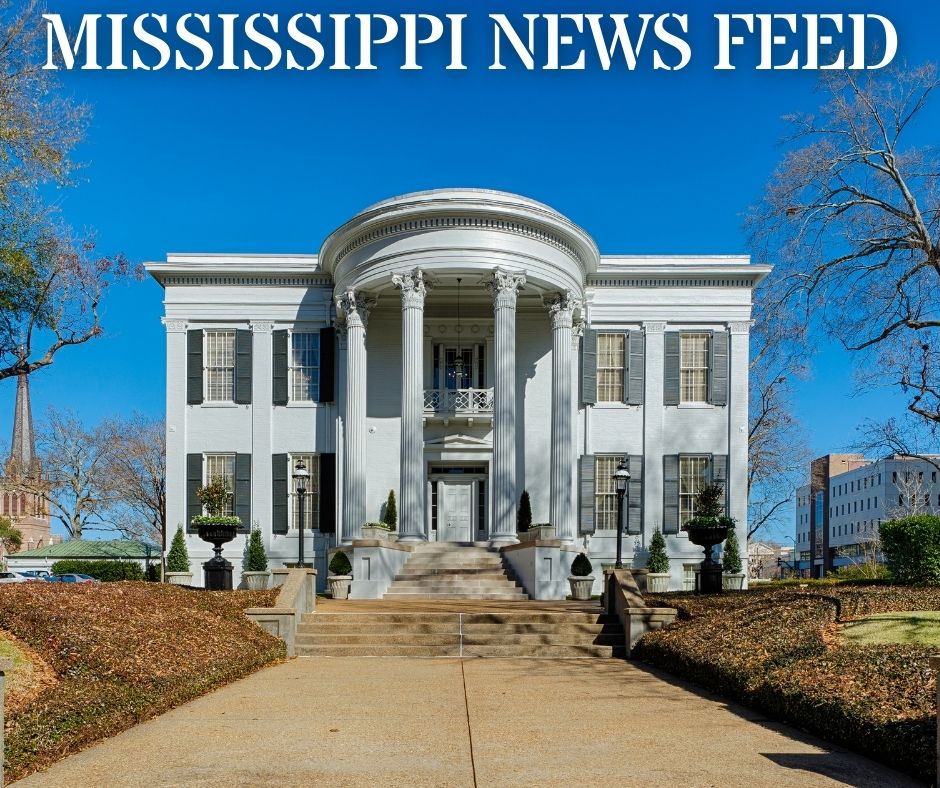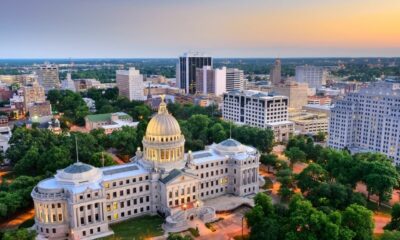Kaiser Health News
She Received Chemo in Two States. Why Did It Cost So Much More in Alaska?
Arielle Zionts
Fri, 29 Sep 2023 09:00:00 +0000
Emily Gebel was trying to figure out why she was having trouble breastfeeding. That's when she felt a lump.
Gebel, a mother of two, went to her primary care doctor in Juneau, Alaska, who referred her for testing, she said.
Her 9-month-old was asleep in her arms when she got the results.
“I got the call from my primary care nurse telling me it was cancer. And I remember I just sat there for probably at least another half an hour or so and cried,” Gebel said.
Juneau, the state capital, has about 31,700 residents, who are served by the city-owned Bartlett Regional Hospital. But Gebel said she has several friends who have also had cancer, all of whom recommended she seek treatment out of town because they felt bigger cities would have better care.
She opted for treatment in Seattle, the closest major American city to Alaska. She underwent surgery at Virginia Mason Medical Center in September 2022. In January, she began chemotherapy at Lifespring Cancer Treatment Center, a stand-alone clinic that she said she selected because it offers a lower-dose chemotherapy.
During chemo, she learned she had stage 4 breast cancer, she said.
Commuting to Seattle for chemo every week — nonstop flights that lasted as long as two hours and 45 minutes — became tiring. So Gebel began treatment at Bartlett Regional Hospital after her Seattle doctor taught hospital staffers there how to administer her chemo regimen.
Then the bill came.
The Patient: Emily Gebel, 37, insured through her husband's employer by Premera Blue Cross. She was previously covered by Moda Health.
Medical Service: One round of metronomic chemotherapy, which involves regular infusions at lower but more frequent doses and over a longer period than traditional chemotherapy.
Service Provider: Bartlett Regional Hospital and Lifespring Cancer Treatment Center. The hospital is a tax-exempt facility owned by the city and borough of Juneau, though most of its revenue comes from the services it provides, according to hospital officials. Lifespring is a stand-alone, doctor-owned cancer clinic in Seattle.
Total Bill: The prices for Gebel's chemo infusions at Bartlett Regional Hospital varied week to week. A hospital bill showed one infusion in July was listed at $5,077.28 — more than three times the price for a similar mix of drugs at the Seattle clinic, $1,611.24.
What Gives: In the United States, the price for the same medical service can vary based on where it is received. And for those living in remote areas like Alaska, the price difference can put care further out of reach.
Gebel's firsthand experience with this disparity began after her husband, Jered, requested a cost estimate from Bartlett Regional Hospital. It said Gebel's chemo would cost around $7,500 per weekly infusion, more than 4½ times what she had been charged in Seattle.
“The email came through with the bill estimate, and it's like, ‘Oh my goodness, this has to be wrong,” Jered said.
Jered said Emily had met her annual out-of-pocket maximum, meaning her insurance would cover the costs of her treatment, but from the start, the disparity just bothered him.
When Emily received a bill for a few rounds of her weekly chemo treatments, it showed the hospital charged more than triple what the Seattle clinic did for a round of chemo, asking higher prices for every related service and medication she received that week.
The hospital charged about $1,000 for the first hour of chemo infusion, which is more than twice the rate at the Seattle clinic. One of the drugs cost $714, more than three times the price at the clinic.
It was even the tiniest things: The hospital charged $19.15 for Benadryl, about 22 times the clinic's price of 87 cents.
Staff at Lifespring Cancer Treatment Center, the Seattle clinic, did not reply to requests for comment.
Sam Muse, the hospital's former chief financial officer, who no longer works there, said Bartlett Regional Hospital officials determined prices by looking at average wholesale prices and what other facilities in the region charge. Muse said the hospital had to account for high operating costs.
“Anything that we charge certainly has to take into consideration … the cost of just supplying health care in a rural setting like Juneau,” Muse said. “We're not accessible by road at all, only ferry or plane.”
Juneau's isolated geography makes reaching many resources a challenge. The city is part of the Alaska Panhandle, a narrow, island-speckled sliver of the state wedged between Canada, the Pacific Ocean, and Glacier Bay National Park & Preserve. Neither Anchorage nor Vancouver, its nearest major cities, is close by.
The hospital — the only one in the city and largest in the panhandle — treats a small number of cancer patients, at least a few hundred last year, Muse said. Its two oncologists live outside the city and fly into Juneau six times a month, said Erin Hardin, a hospital spokesperson.
Bartlett spent nearly $11 million last year to pay and fly in nurses, doctors, and other staffers who live outside the city, Muse said.
We're “trying to find that happy medium between keeping care here and keeping costs down and how do we do that in a sustainable way for the long term,” Muse said.
Even though research shows Alaskans seek emergency care and are admitted to the hospital less often than many Americans, they had the third-highest health care expenditures per capita in 2020.
“Alaska is special in that it's small, it's remote, therefore it's more expensive,” said Mouhcine Guettabi, an associate professor of economics at the University of North Carolina-Wilmington who studied health care costs in Alaska when he taught there.
Guettabi said hospitals often need to offer higher wages to recruit doctors and nurses willing to live in Alaska, which has a higher cost of living than that of most states.
Towns or entire regions may have few specialists and only one hospital, creating a dearth of competition that may drive up costs, Guettabi said. It's also more expensive to ship items there, including medical supplies.
But Alaska's costs are higher even when taking all those factors into account, Guettabi said. In Anchorage, for instance, prices for medical items increased nearly three times as fast from 1991 through 2017 than prices overall.
Alaska also has a unique policy that may be increasing prices. Its “80th percentile rule” was enacted in 2004 to limit the amount of money patients pay when treated by providers outside their health insurers' network. But like many experiments meant to rein in costs, the rule has instead been increasing health care spending, according to a study by Guettabi.
“Critics think the rule may be adding to that soaring spending, partly because over time providers could increase their charges — and insurance payments would have to keep pace,” the study noted.
The Resolution: Emily received a bill from the hospital in September, more than five months after beginning treatment there.
It said Emily owed about $3,100 even though a previous explanation of benefits said she'd met her out-of-pocket limit.
Jered said he contacted hospital billing officials, who discovered that a medicine had been incorrectly coded and told Jered that Emily's charge was zero.
“We know how hard it is to pay these ridiculous medical bills,” Jered said. “If I'm able to push back a little bit against this massive system, well, hey, maybe other people can, too. And who knows, maybe eventually health care prices can come down.”
Emily said she's glad Jered knows how to handle the financial aspects of her care. Like many Americans, she could have just paid or ignored the incorrect bills, risking being sent to collections.
“I can't imagine the amount of time I would have to spend on it while juggling parenting and also dealing with completing treatment, going through the sickness that goes along with that, and just generally feeling very run down,” she said.
The Takeaway: Alaska government officials, nonprofits, and experts have suggested methods to lower the cost of health care. The state is considering repealing the 80th percentile rule and implementing value-based care, which emphasizes paying providers based on health outcomes.
But what should Alaskans and other patients do in the meantime? If you live in a high-cost state, you might check out prices at a health care system in a state next door.
In any case, get ready to advocate for yourself.
Jered learned about medical billing by following the Bill of the Month series and reading “Never Pay the First Bill,” a book by Marshall Allen, a former ProPublica reporter.
Request itemized bills and make sure the codes match the services you received, Jered said. Note any prices that seem outrageous. If you have concerns, arrange an in-person meeting with an official in the provider's finance department. If that's not possible, a phone call is better than email. Make sure to document all conversations, so you have a record.
Come prepared with your documents and evidence, including the rate paid by Medicare, the federal insurance system for those 65 and older. Ask the official to explain the reasons for the codes and pricing before contesting anything. You can sometimes negotiate high-priced services down. And remember that the person you're speaking with isn't to blame for your health care costs.
“Don't come at them angry, don't come at them as viewing them as the enemy — because they're not,” Jered said. “They are working within the same broken system.”
——————————
By: Arielle Zionts
Title: She Received Chemo in Two States. Why Did It Cost So Much More in Alaska?
Sourced From: kffhealthnews.org/news/article/chemo-chemotherapy-cancer-price-disparity-alaska/
Published Date: Fri, 29 Sep 2023 09:00:00 +0000
Did you miss our previous article…
https://www.biloxinewsevents.com/social-security-overpayments-draw-scrutiny-and-outrage-from-members-of-congress/
Kaiser Health News
KFF Health News’ ‘What the Health?’: Abortion Access Changing Again in Florida and Arizona
Thu, 02 May 2024 19:30:00 +0000
The Host
Julie Rovner
KFF Health News
Julie Rovner is chief Washington correspondent and host of KFF Health News' weekly health policy news podcast, “What the Health?” A noted expert on health policy issues, Julie is the author of the critically praised reference book “Health Care Politics and Policy A to Z,” now in its third edition.
The national abortion landscape was shaken again this week as Florida's six-week abortion ban took effect. That leaves North Carolina and Virginia as the lone Southern states where abortion remains widely available. Clinics in those states already were overflowing with patients from across the region.
Meanwhile, in a wide-ranging interview with Time magazine, former President Donald Trump took credit for appointing the Supreme Court justices who overturned Roe v. Wade, but he steadfastly refused to say what he might do on the abortion issue if he is returned to office.
This week's panelists are Julie Rovner of KFF Health News, Sarah Karlin-Smith of the Pink Sheet, Alice Miranda Ollstein of Politico, and Rachana Pradhan of KFF Health News.
Panelists
Sarah Karlin-Smith
Pink Sheet
Alice Miranda Ollstein
Politico
Rachana Pradhan
KFF Health News
Among the takeaways from this week's episode:
- Florida's new, six-week abortion ban is a big deal for the entire South, as the state had been an abortion haven for patients as other states cut access to the procedure. Some clinics in North Carolina and southern Virginia are considering expansions to their waiting and recovery rooms to accommodate patients who now must travel there for care. This also means, though, that those traveling patients could make waits even longer for local patients, including many who rely on the clinics for non-abortion services.
- Passage of a bill to repeal Arizona's near-total abortion ban nonetheless leaves the state's patients and providers with plenty of uncertainty — including whether the ban will temporarily take effect anyway. Plus, voters in Arizona, as well as those in Florida, will have an opportunity in November to weigh in on whether the procedure should be available in their state.
- The FDA's decision that laboratory-developed tests must be subject to the same regulatory scrutiny as medical devices comes as the tests have become more prevalent — and as concerns have grown amid high-profile examples of problems occurring because they evaded federal review. (See: Theranos.) There's a reasonable chance the FDA will be sued over whether it has the authority to make these changes without congressional action.
- Also, the Biden administration has quietly decided to shelve a potential ban on menthol cigarettes. The issue raised tensions over its links between health and criminal justice, and it ultimately appears to have run into electoral-year headwinds that prompted the administration to put it aside rather than risk alienating Black voters.
- In drug news, the Federal Trade Commission is challenging what it sees as “junk” patents that make it tougher for generics to come to market, and another court ruling delivers bad news for the pharmaceutical industry's fight against Medicare drug negotiations.
Plus, for “extra credit” the panelists suggest health policy stories they read this week that they think you should read, too:
Julie Rovner: ProPublica's “A Doctor at Cigna Said Her Bosses Pressured Her To Review Patients' Cases Too Quickly. Cigna Threatened To Fire Her,” by Patrick Rucker, The Capitol Forum, and David Armstrong, ProPublica.
Alice Miranda Ollstein: The Associated Press' “Dozens of Deaths Reveal Risks of Injecting Sedatives Into People Restrained by Police,” by Ryan J. Foley, Carla K. Johnson, and Shelby Lum.
Sarah Karlin-Smith: The Atlantic's “America's Infectious-Disease Barometer Is Off,” by Katherine J. Wu.
Rachana Pradhan: The Wall Street Journal's “Millions of American Kids Are Caregivers Now: ‘The Hardest Part Is That I'm Only 17,” by Clare Ansberry.
Also mentioned on this week's podcast:
- Time's “How Far Trump Would Go,” by Eric Cortellessa.
- NPR's “Why Is a 6-Week Abortion Ban Nearly a Total Ban? It's About How We Date a Pregnancy,” by Selena Simmons-Duffin.
- NPR's “'Sicko's' Peeno Sees Few Gains in Health Insurance,” by Julie Rovner.
- CNN's “Walmart Will Close All of Its Health Care Clinics,” by Nathaniel Meyersohn.
Credits
Francis Ying
Audio producer
Emmarie Huetteman
Editor
To hear all our podcasts, click here.
And subscribe to KFF Health News' “What the Health?” on Spotify, Apple Podcasts, Pocket Casts, or wherever you listen to podcasts.
——————————
Title: KFF Health News' ‘What the Health?': Abortion Access Changing Again in Florida and Arizona
Sourced From: kffhealthnews.org/news/podcast/what-the-health-345-abortion-access-florida-arizona-may-2-2024/
Published Date: Thu, 02 May 2024 19:30:00 +0000
Kaiser Health News
DIY Gel Manicures May Harm Your Health
Tarena Lofton
Thu, 02 May 2024 09:00:00 +0000
A fresh set from the comfort of your own home? DIY gel nails have been all the rage on social media, but the practice could cause you to develop a life-changing allergy. In a TikTok video, creator @alina.gene describes developing an acrylate allergy from doing gel nails at home. Now, when exposed to acrylates, the creator feels severe pain.
The creator warns viewers not to self-apply nail polish that requires a UV light to cure. In later videos, @alina.gene explains that at-home use differs from in-salon use because salon professionals have access to higher-quality chemicals that are less likely to cause reactions and that they also have proper training on how to safely apply the products.
“I know I sound real dramatic because an allergy to gel nails or even an allergy to acrylates isn't going to kill you, but the thing is, in the wrong situation it could prevent you from getting lifesaving medical care,” said @alina.gene in another video. Common medical products contain acrylates, and developing this allergy can cause major issues in obtaining future medical care.
We asked an allergist to walk us through this viral video.
If you enjoyed this story from the KFF Health News social team, follow us on Instagram @KFFHealthNews.
✍️: KFF Health News Audience Engagement Team
——————————
By: Tarena Lofton
Title: DIY Gel Manicures May Harm Your Health
Sourced From: kffhealthnews.org/news/article/diy-gel-manicures-health-risks/
Published Date: Thu, 02 May 2024 09:00:00 +0000
Did you miss our previous article…
https://www.biloxinewsevents.com/robert-f-kennedy-jr-is-wrong-about-a-ban-on-nih-research-about-mass-shootings/
Kaiser Health News
Robert F. Kennedy Jr. Is Wrong About a Ban on NIH Research About Mass Shootings
Louis Jacobson, PolitiFact
Thu, 02 May 2024 09:00:00 +0000
“Congress prohibits the NIH from researching the cause of mass shootings.”
Robert F. Kennedy Jr. in an April 21 post on X
The National Institutes of Health is the federal government's main agency for supporting medical research. Is it barred from researching mass shootings? That's what presidential candidate Robert F. Kennedy Jr. said recently.
Kennedy, whose statements about conspiracy theories earned him PolitiFact's 2023 “Lie of the Year,” is running as an independent third-party candidate against President Joe Biden, the presumptive Democratic candidate, and the presumptive Republican nominee, former President Donald Trump.
On April 21 on X, Kennedy flagged his recent interview with conservative commentator Glenn Beck, which touched on gun policy. Kennedy summarized his gun policy views in the post, writing, “The National Institutes of Health refuses to investigate the mystery; in fact, Congress prohibits the NIH from researching the cause of mass shootings. Under my administration, that rule ends — and our kids' safety becomes a top priority.”
But this information is outdated.
In 1996, Congress passed the “Dickey Amendment,” an appropriations bill provision that federal officials widely interpreted as barring federally funded research related to gun violence (though some observers say this was a misinterpretation). Congress in 2018 clarified that the provision didn't bar federally funded gun-related research, and funding for such efforts has been flowing since 2020.
Kennedy's campaign did not provide evidence to support his statement.
What Was the Dickey Amendment?
After criticizing some federally funded research papers on firearms in the mid-1990s, pro-gun advocates, including the National Rifle Association, lobbied to halt federal government funding for gun violence research.
In 1996, Congress approved appropriations bill language saying that “none of the funds made available for injury prevention and control at the Centers for Disease Control and Prevention may be used to advocate or promote gun control.” The language was named for one of its backers, Rep. Jay Dickey (R-Ark).
But the Dickey Amendment, as written, did not ban all gun-related research outright.
“Any honest research that was not rigged to produce results that helped promote gun control could be funded by CDC,” said Gary Kleck, a Florida State University criminologist. But CDC officials, experts said, interpreted the Dickey Amendment as banning all gun-related research funding.
This perception meant the amendment “had a chilling effect on funding for gun research,” said Allen Rostron, a University of Missouri-Kansas City law professor who has written about the amendment. Federal agencies “did not want to take a chance on funding research that might be seen as violating the restriction” and so “essentially were not funding research on gun violence.”
Also, the Dickey Amendment targeted only the CDC, not all other federal agencies. Congress expanded the restriction to cover NIH-funded research in 2011.
Although the Dickey Amendment didn't bar gun-related research, federal decision-makers acted as though it did by not pursuing such research.
Moving Past the Dickey Amendment
Over time, critics of the gun industry made an issue of the Dickey Amendment and gathered congressional support to clarify the amendment.
In 2018, lawmakers approved language that said the amendment wasn't a blanket ban on federally funded gun violence research. By 2020, federal research grants on firearms began to be issued again, starting with $25 million to be split between the CDC and NIH.
By now, the CDC and NIH are funding a “large portfolio” of firearm violence-related research, said Daniel Webster, a professor at the Johns Hopkins Bloomberg School of Public Health.
Also, the Justice Department's National Institute of Justice has funded the largest study of mass shootings to date, Webster said, and is seeking applications for studies of mass shootings.
Our Ruling
Kennedy said, “Congress prohibits the NIH from researching the cause of mass shootings.”
Although the Dickey Amendment, a provision of appropriations law supported by the gun industry, didn't prohibit all federally supported, gun-related research from 1996 to 2018, decision-makers acted as though it did.
However, in 2018, Congress clarified the provision's language. And since 2020, CDC, NIH, and other federal agencies have funded millions of dollars in gun-related research, including studies on mass shootings.
We rate Kennedy's statement False.
Our Sources
Robert F. Kennedy Jr. post on X, April 21, 2024
National Institutes of Health, “NIH Awards Additional Research and Training Grants to Support Firearm Injury and Mortality Prevention Science,” Sept. 20, 2023
National Institute of Justice, “Public Mass Shootings: Database Amasses Details of a Half Century of U.S. Mass Shootings with Firearms, Generating Psychosocial Histories,” Feb. 3, 2022
National Institute of Justice, “NIJ FY24 Research and Evaluation on Firearm Violence and Mass Shootings,” Feb. 5, 2024
Centers for Disease Control and Prevention, “Funded Research,” accessed April 22, 2024
American Psychological Association, “A Thaw in the Freeze on Federal Funding for Gun Violence and Injury Prevention Research,” April 1, 2021
Allen Rostron, “The Dickey Amendment on Federal Funding for Research on Gun Violence: A Legal Dissection” (American Journal of Public Health), July 2018
Email interview with Gary Kleck, a Florida State University criminologist, April 22, 2024
Email interview with Daniel W. Webster, professor at the Johns Hopkins Bloomberg School of Public Health, April 22, 2024
Email interview with Jaclyn Schildkraut, executive director of the Regional Gun Violence Research Consortium at the Rockefeller Institute of Government, April 22, 2024
Email interview with Mike Lawlor, University of New Haven criminologist, April 22, 2024
Email interview with Allen Rostron, University of Missouri-Kansas City law professor, April 22, 2024
KFF Health News is a national newsroom that produces in-depth journalism about health issues and is one of the core operating programs at KFF—an independent source of health policy research, polling, and journalism. Learn more about KFF.
USE OUR CONTENT
This story can be republished for free (details).
——————————
By: Louis Jacobson, PolitiFact
Title: Robert F. Kennedy Jr. Is Wrong About a Ban on NIH Research About Mass Shootings
Sourced From: kffhealthnews.org/news/article/fact-check-rfk-jr-wrong-nih-research-mass-shootings-gun-control-dickey-amendment/
Published Date: Thu, 02 May 2024 09:00:00 +0000
Did you miss our previous article…
https://www.biloxinewsevents.com/breaking-a-promise-california-deficit-could-halt-raises-for-disability-workers/
-
Mississippi Today4 days ago
On this day in 1951
-
Mississippi News5 days ago
One injured in Mississippi officer-involved shooting after chase
-
SuperTalk FM3 days ago
Festival merger in Leland sets up one major event for Mississippi Delta
-
Mississippi News2 days ago
Two women accused of shoplifting across southeast captured in Mississippi
-
SuperTalk FM3 days ago
PERS bill set to phase in employer rate increase heads to governor’s desk
-
Mississippi Business1 day ago
Geartek expanding operations in Alcorn County
-
SuperTalk FM6 days ago
Investigation underway after gun found in backpack of Ridgeland High School student
-
SuperTalk FM6 days ago
Mississippi Senate throws curveball, sets spiral in motion for brand new public school funding formula









































